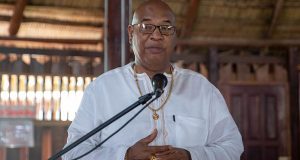By Carla Hindman
Director of Financial Education, Visa Canada
Health and fitness are among the top resolutions for Canadians. But what about getting your personal finances in shape and becoming financially fit? Every year Canadians vow to stick to a budget, curb spending and pay off debt. Coming up with these personal finance resolutions is easy – it’s sticking to them that’s the hard part!
The New Year is a great time to reevaluate where you stand financially. Here are five tips to help you get your finances in shape for the New Year.
Set SMART Goals. When it comes to setting money goals, a simple rule will help your resolution stick. Make sure your goals are SMART, specific, measureable, attainable, realistic and time sensitive. Instead of having the goal of “saving more money”, a SMART goal might be to put an extra $60 per month for emergencies. Establishing quantifiable measurements means you can track – and be encouraged by – your progress. Telling your friends or family about your financial resolutions will help make you accountable.
Start a budget. Knowing where your money goes is an eye opening experience. Only 47 per cent of Canadians use a budget to plan their spending. A budget can help you pay your bills on time, cover unexpected emergencies and reach your financial goals – now and in the future. To build a monthly budget you will need to add up your income, estimate expenses and then figure out the difference. Practical Money Skills has a series of tools and online calculators to help you get started.
Build savings. Saving is never easy, but it’s worth it in the long run. Automatic transfers to a savings account offer a convenient way to build your savings. Investigate savings tools such as a Tax Free Savings Account (TFSA) or a Registered Retirement Savings Plan (RRSP) to see if they fit your savings goals. Saving for post-secondary? Consider opening a Registered Education Savings Plan (RESP) and watch your money grow tax-free until it’s withdrawn for qualified educational expenses. As a bonus, the federal government will provide a grant of 20 per cent of the first $2,500 in annual contributions made to an RESP – up to $500 per year.
Manage Debt. If you’re in debt, you’re not alone. Start out by making a list of everything you owe, whether it’s a credit card, student loans or a mortgage. Reducing debt is like losing weight. You’re not going to lose 50 pounds in a month. You need realistic goals in reasonable timeframes.
Prepare for the Unexpected. There’s nothing harder to plan for than the unexpected. The key to successfully surviving these life-changing events, financially at least, is to anticipate hard times. Build an emergency fund that is easy to access in the event of unemployment, illness or a major unplanned expense. Experts recommend saving three to six months of living expenses. Need help figuring out how much to put aside for your emergency fund? Check out this calculator from Practical Money Skills.
Bottom line: Ring in the New Year with financial resolutions that will help you save, spend and invest smarter in the coming year.
 Pride News Canada's Leader In African Canadian & Caribbean News, Views & Lifestyle
Pride News Canada's Leader In African Canadian & Caribbean News, Views & Lifestyle





